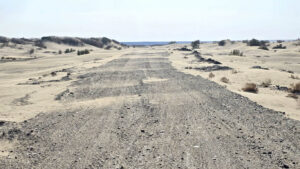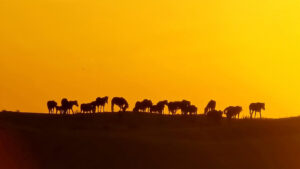30th March – 5th April
Kazakhstan Border to Turkistan
Distance: 406km | Total Distance: 871km
The border crossing between Uzbekistan and Kazakhstan was even more chaotic than the Tajikistan-Uzbekistan crossing a few days earlier. We had to walk my bike and lug all our baggage through passport control and security screens for both countries, a bun fight where there are no queues and people push their way through. It took two hours.
Waiting patiently for us was the new team – Islam, our guide and Sasha, our driver. It was already 5pm when we met and were soon ushered through a shop to get a few supplies and led along potholed backstreets and then small, muddy tracks in fading light to get to the Syr Darya – our first night in Kazakhstan was spent camping beside the mighty river. We set up in the dark, and in the morning realised we were camping right on the borderline with Uzbekistan. There were others fishing not far away, but two border officials paid us a visit first thing the next day and asked us to pack and move on immediately.
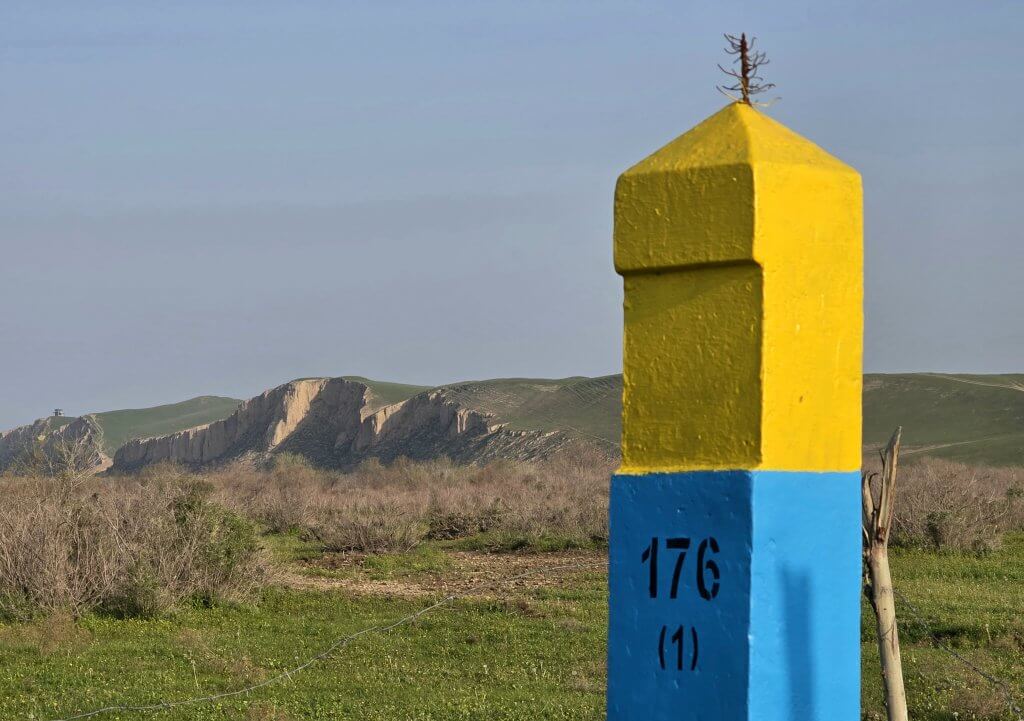
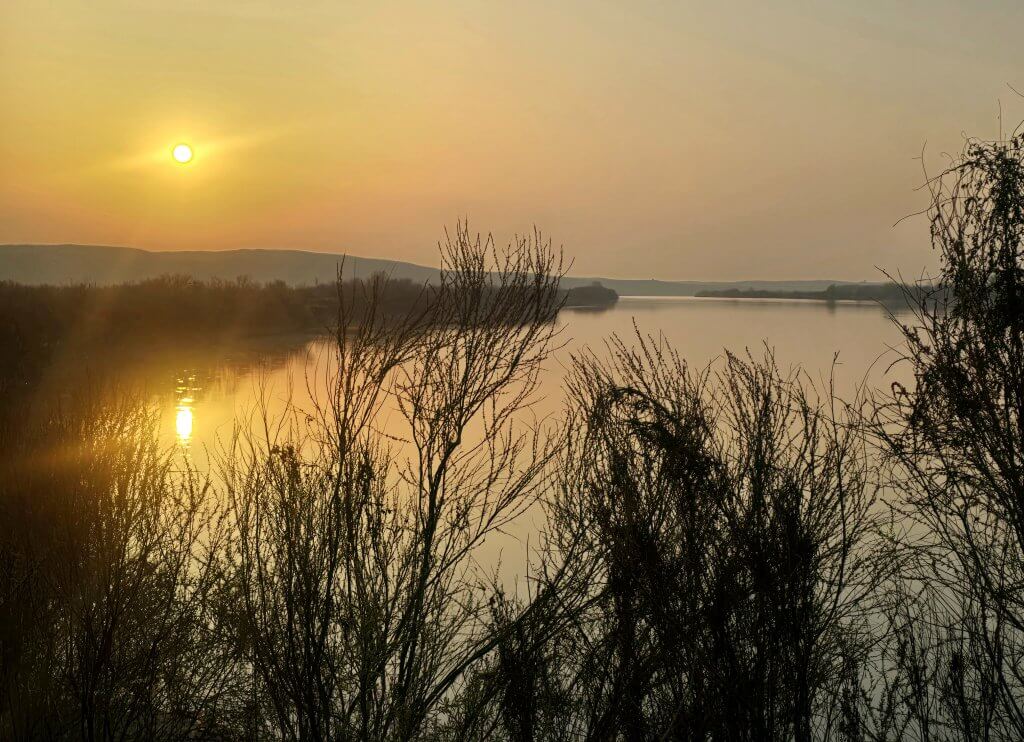
We navigated a network of steep, muddy and then dusty tracks away from the river’s edge, through a couple of small villages and onto my planned route around Shadara Reservoir. In the early 1960s, the Soviets dammed the Syr Darya and simultaneously built the Shadara Dam. Floodgates were constructed to control the Syr Darya’s floodwaters. Then, in 1969 during a raging flood, sixty percent of the Syr Darya’s flow was drained to release the pressure on the Shadara Reservoir, diverting the water into the Arnasay depression to form Aydarkul Lake (that I visited in Uzbekistan). The Syr Darya continues to feed Aydarkul Lake and the Shadara Reservoir; both massive manmade bodies of water that in turn enable huge tracts of land to be irrigated for food production.
Rather than cycling directly to Shadara town at the head of the reservoir, I chose to follow the southwestern shoreline, the road sandwiched between the water and the barbed wire border fence between Kazakhstan and Uzbekistan. The first section was a hive of activity with market gardeners busy constructing greenhouse tunnels and planting all sorts of crops.
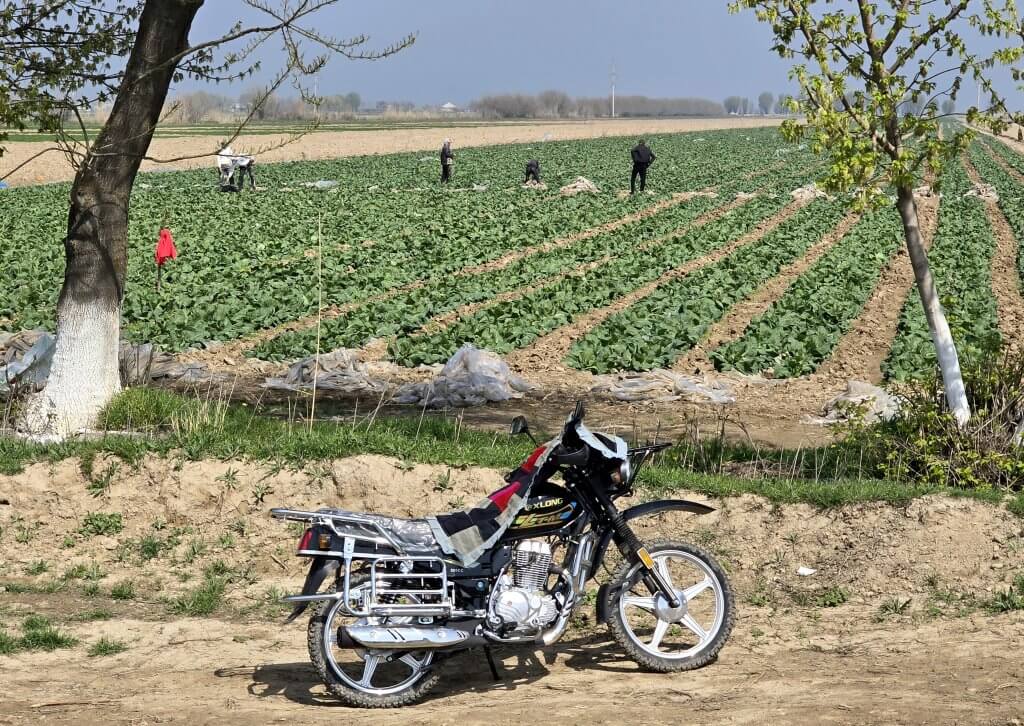
The lake’s shore and walls came right up to the road around the top side of Shadara Dam and were teeming with bird life.
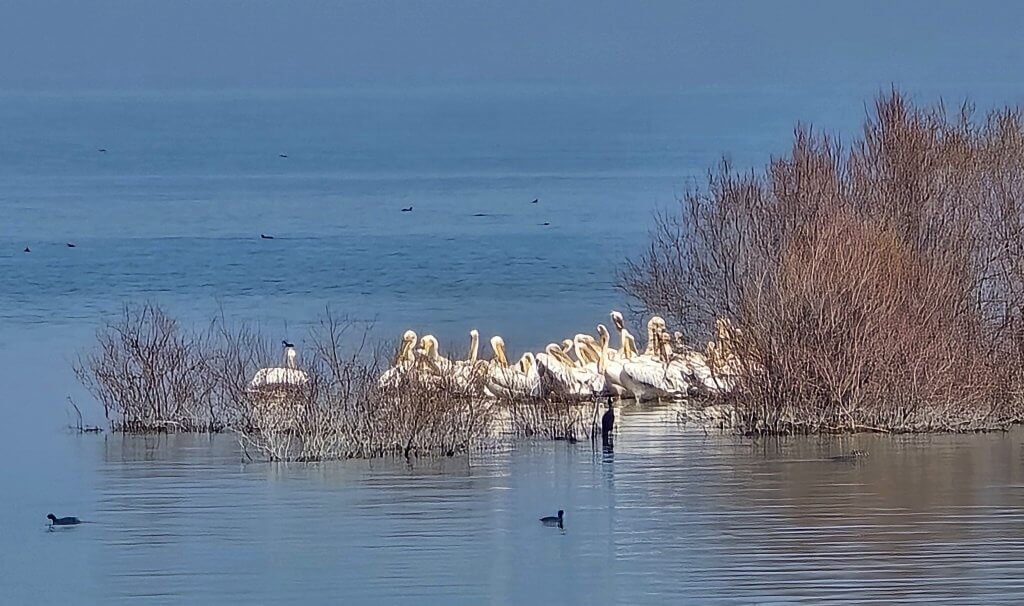
It was a very long day, finally reaching Shadara town after 125km. There seemed to be two halves of the town – one large industrial part that included the hydro-power plant, and the lakeside quarter on the hilltops overlooking the water.
Day 9 – 108km
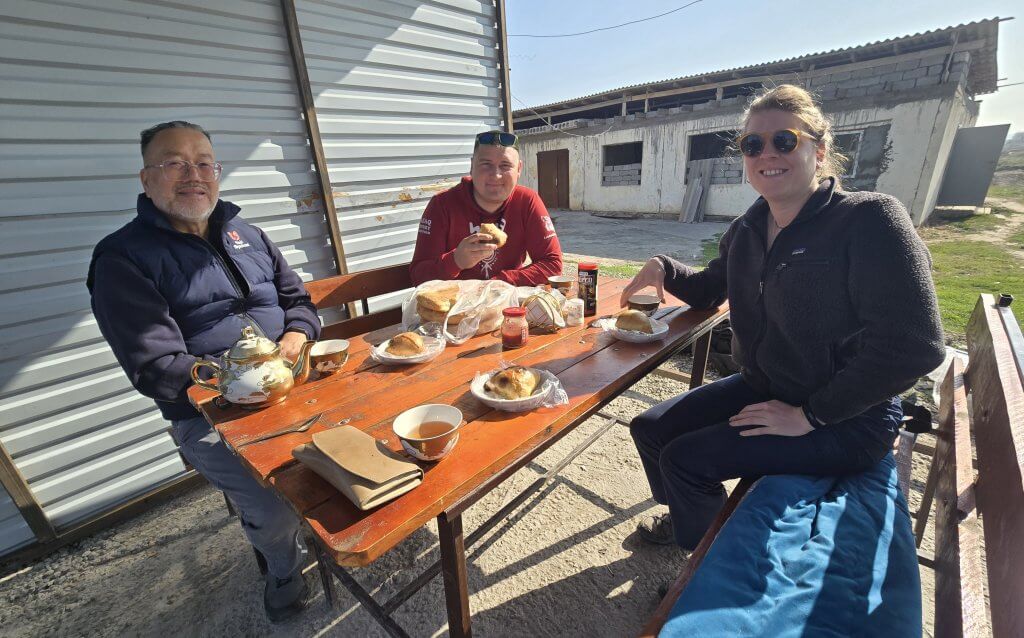
Islam is an historian and was keen to show us some of the lesser known sites. One such site was the Mausoleum of Uzim Ata, a local saint they called “the big grandfather”. As with religions I have seen in other parts of the world, I was interested that religion is still combined with some animist beliefs, a remnant from pre-Islam days – note the sheep’s horn on the shrine. Believers from all over the region make pilgrimages to the grave and worship it. Uzim Ata was known for improving local education as well as spreading the Word of Islam.
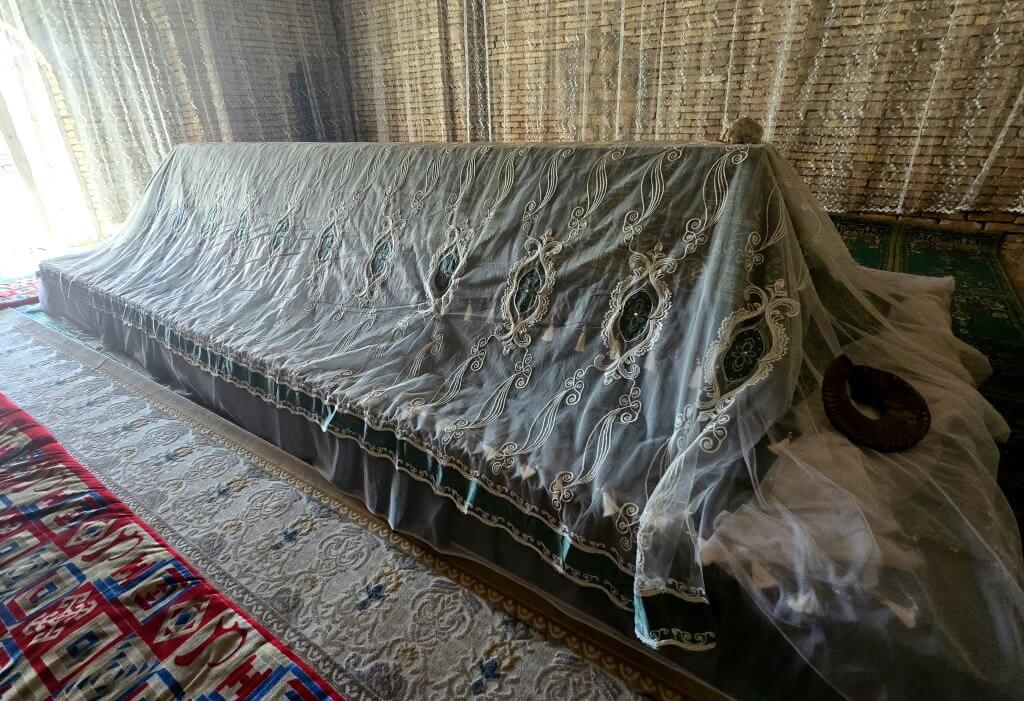
In the late afternoon, we turned off the main road, following dried mud tracks and through river forest. Our second campsite beside the Syr Darya was amongst natural woodland. Here the river is 17 metres deep and very fast flowing. Once the snow has melted up in the mountains from May, the flow and depth is even greater. This was once the realm of the Turan Tiger, last seen here in the early 1900s – but we heard only jackals at night.
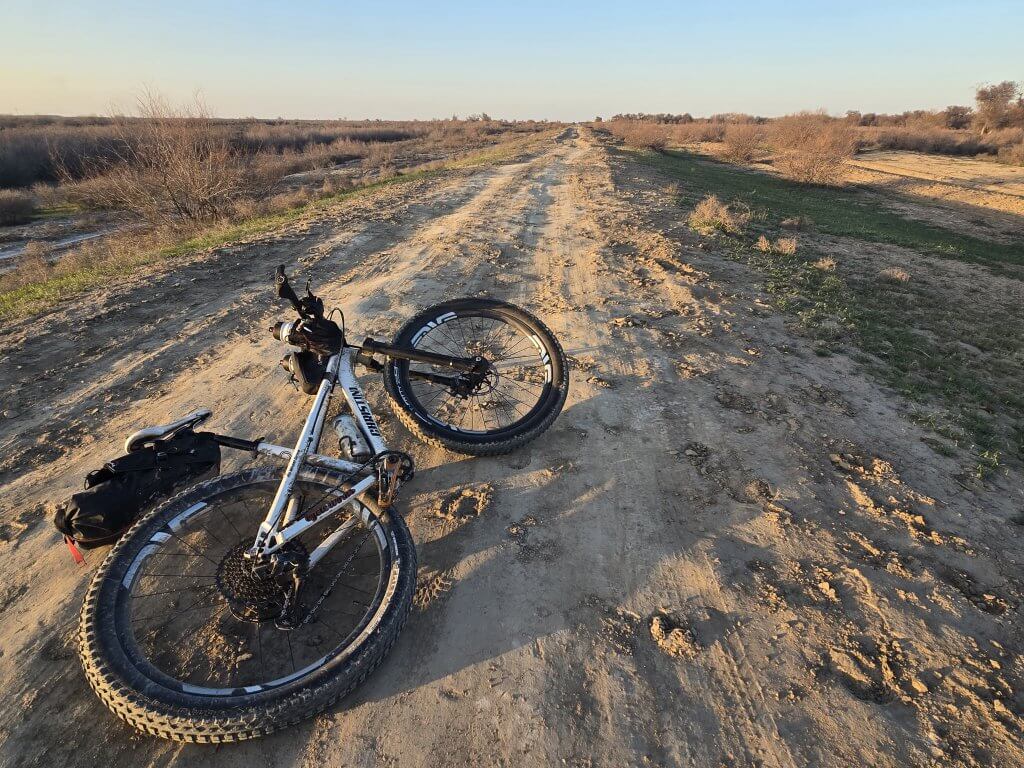
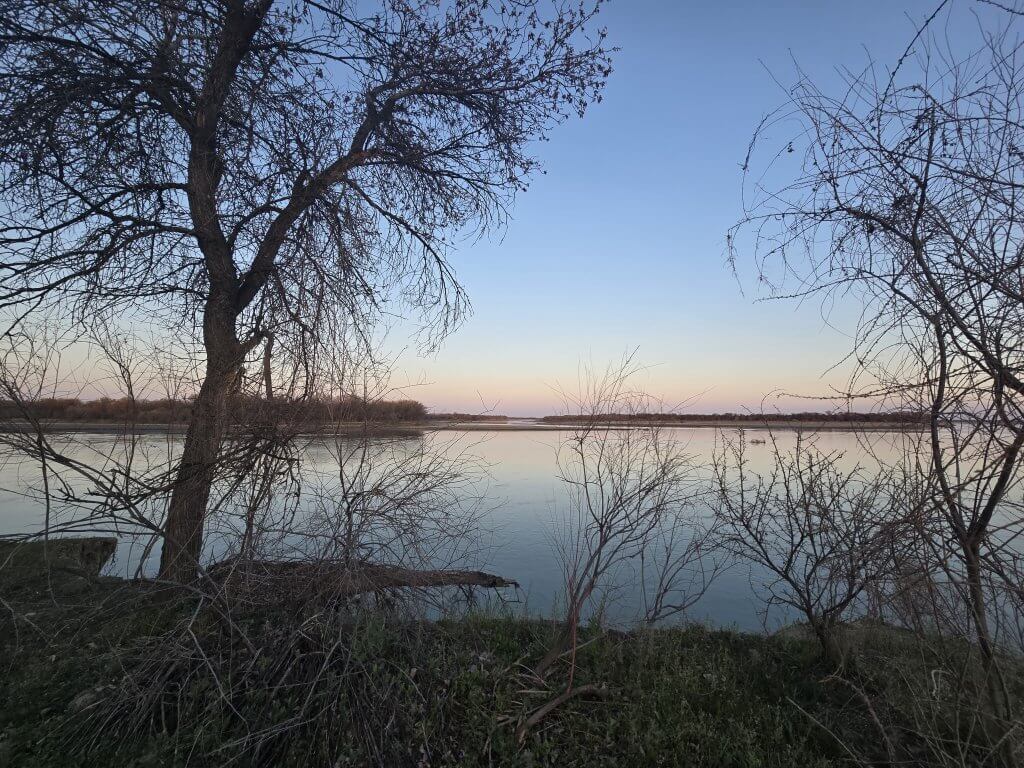
Days 10 and 11
Heading north, away from the river environs, the agriculture was much more broad scale farming. Tractors were ploughing or dry seeding larger tracts of land creating huge dust clouds.
The goal of the day was to reach Otrar, once the largest and most important city on the Northern Branch of the Silk Route. About 20,000 people lived within the walls of the fortress and hundreds of travellers, merchants and scholars would congregate at any one time just outside the city walls. I tried to imagine the hive of activity that would have existed as we followed the path between the municipal bath house and the city gates. The fortress was protected by a five metre deep moat. While the gates and many of the buildings have been rebuilt, the original baked bricks were still in place around the moat.

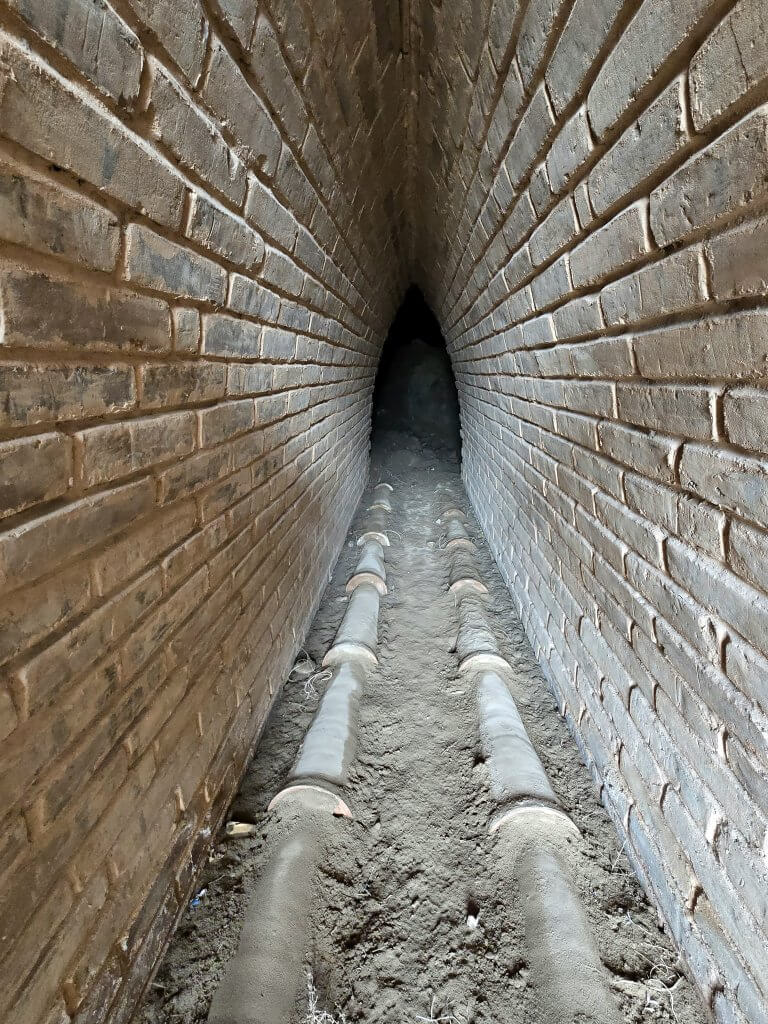
The Syr Darya played a pivotal role in the lives of Otrar citizens and the whole region. Its waters were an oasis on the edge of the desert, used for irrigation, fishing and its shores were covered with rich vegetation, home to many birds and animals. Otrar is mentioned in numerous sources such as medieval Arab, Persian and Turkic authors. The town was situated at the junction of different geographical landscapes and was at the intersection of the caravan routes of the Great Silk Road.

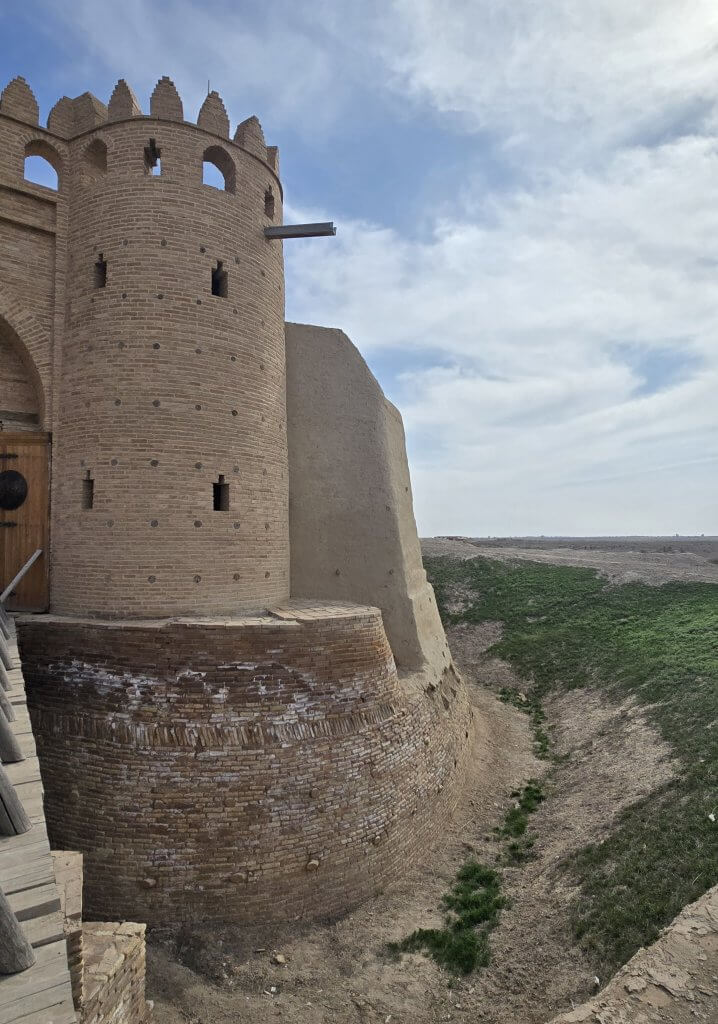
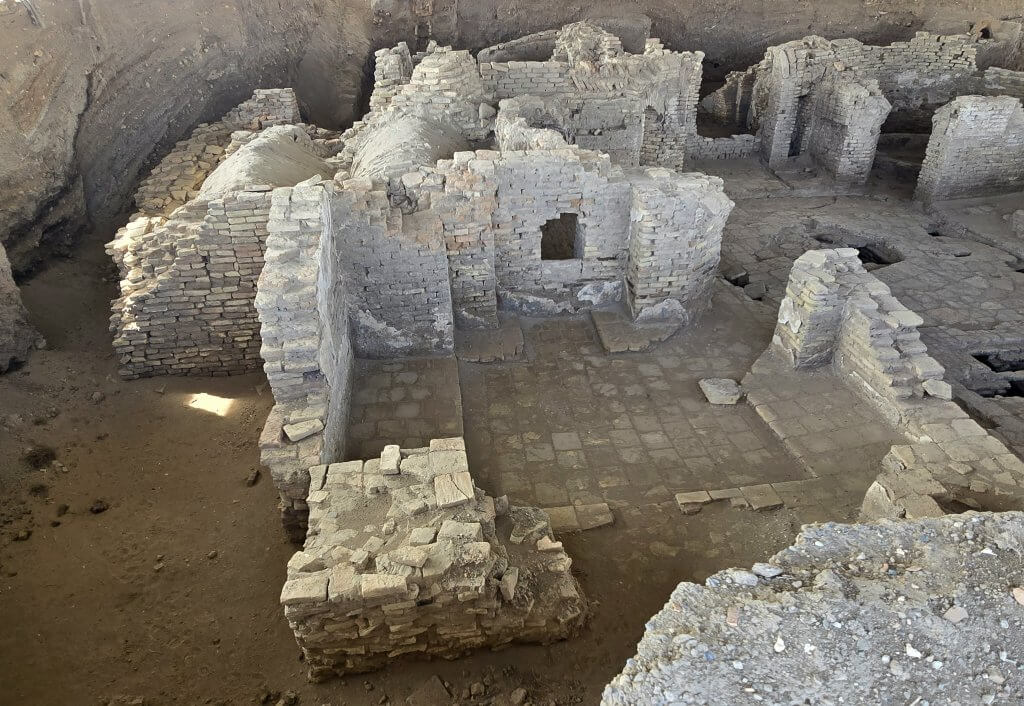
The first town-type settlement in Otrar’s location appeared in the 2nd Century BCE, but the name Otrar appeared between the 6th and 8th Centuries. It had to be developed a second time after Ghengis Khan’s forces ransacked the important city in 1219. By the middle of the 13th century it had returned as a large trade centre on the way from the West to the East. During the second half of the 14th century, the region came into the sphere of Timur’s power. In February 1405, when Timur was visiting Otrar to gather his troops, he caught a cold and died in Otrar.
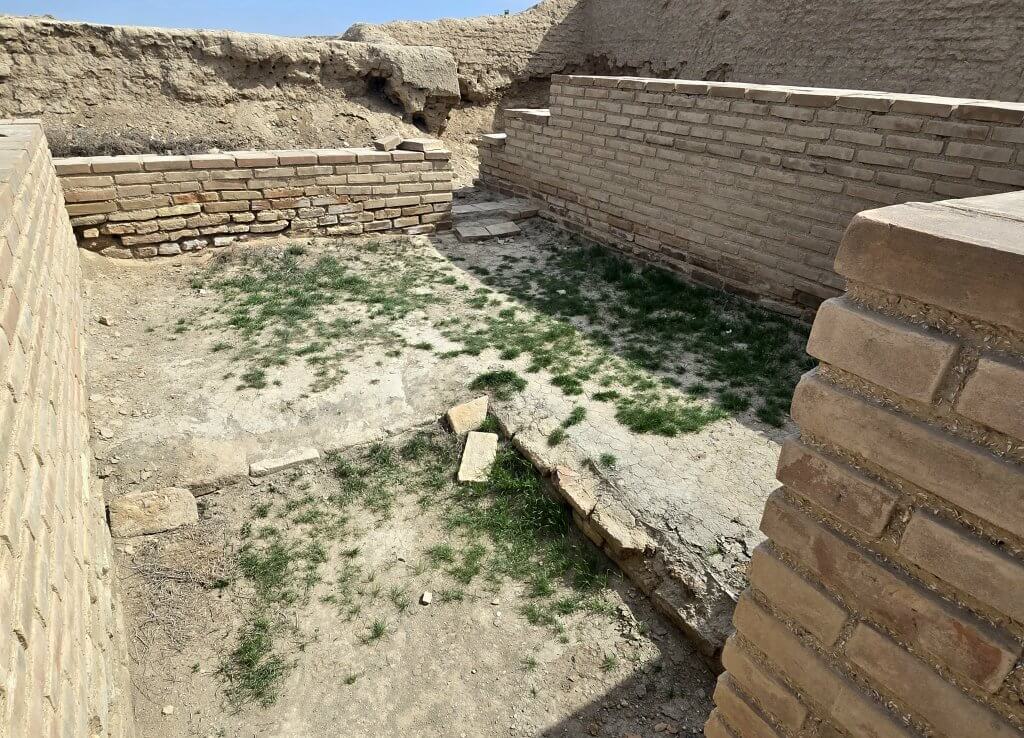
By the end of the 18th century there were only 40 families remaining in Otrar, and the irrigated area had declined to about 5 square kilometres
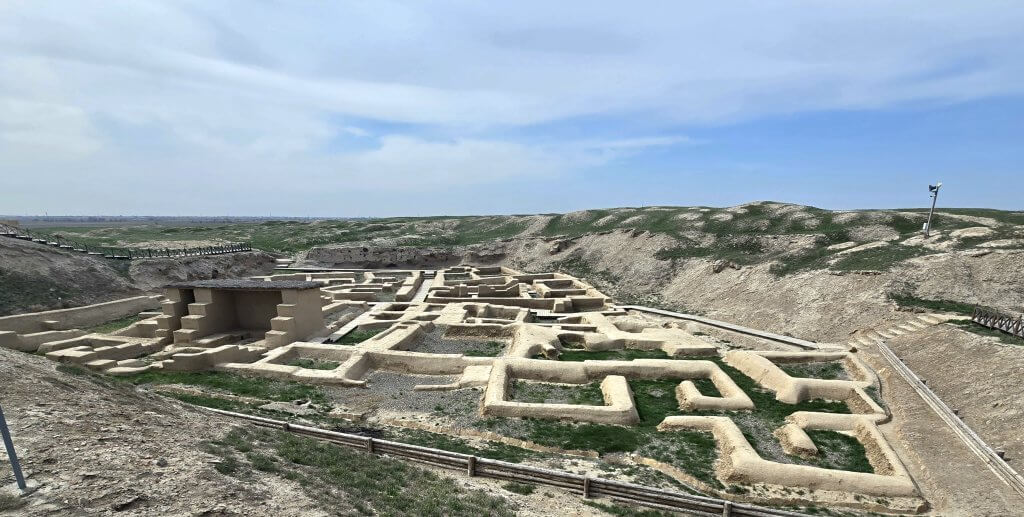
Days 12 and 13
Turkistan
I was in dire need of a break after cycling 10 out of the last 11 days and, as we were ahead of schedule, I decided to take two days to recuperate in Turkistan, the spiritual capital in the region.
The jewell of Turkistan’s crown is the Mausoleum of Khoja Ahmed Yasawi, inscribed as a UNESCO World Heritage Site in 2003. It was built at the time of Timur, from 1389 to 1405. In this partly unfinished building, Persian master builders experimented with architectural and structural solutions later used in the construction of Samarkand, the capital of the Timurid Empire. Today, it is one of the largest and best-preserved constructions of the Timurid period. We were very luck to have Islam give us a tour on the building and other smaller mosques in the grounds.
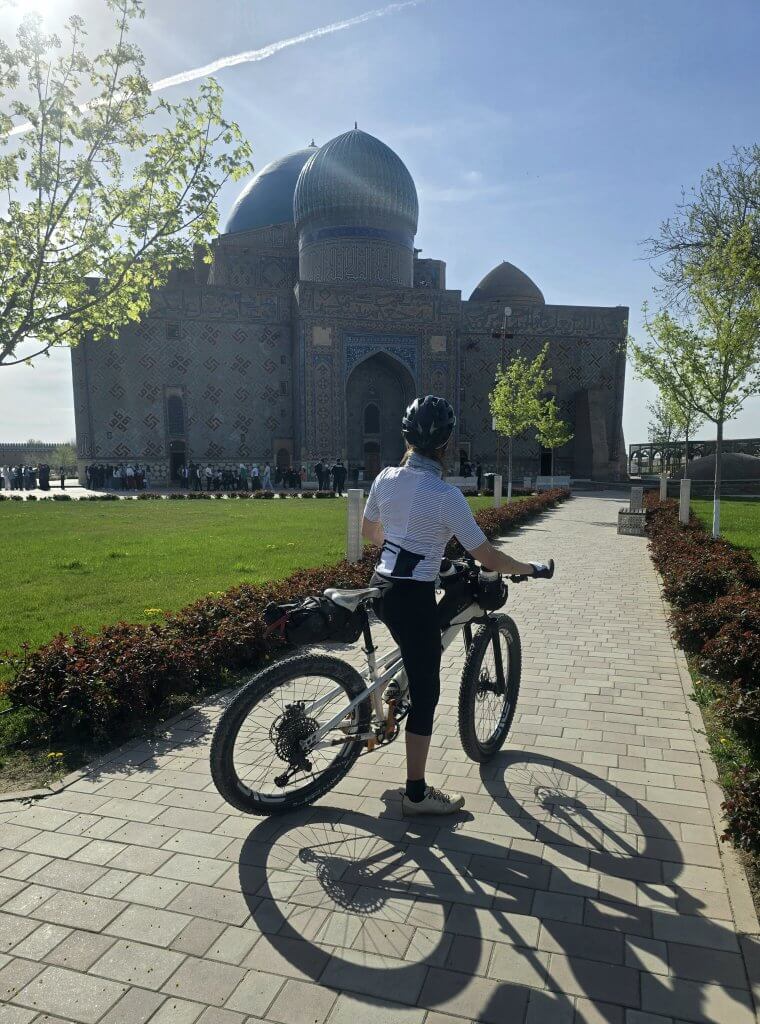
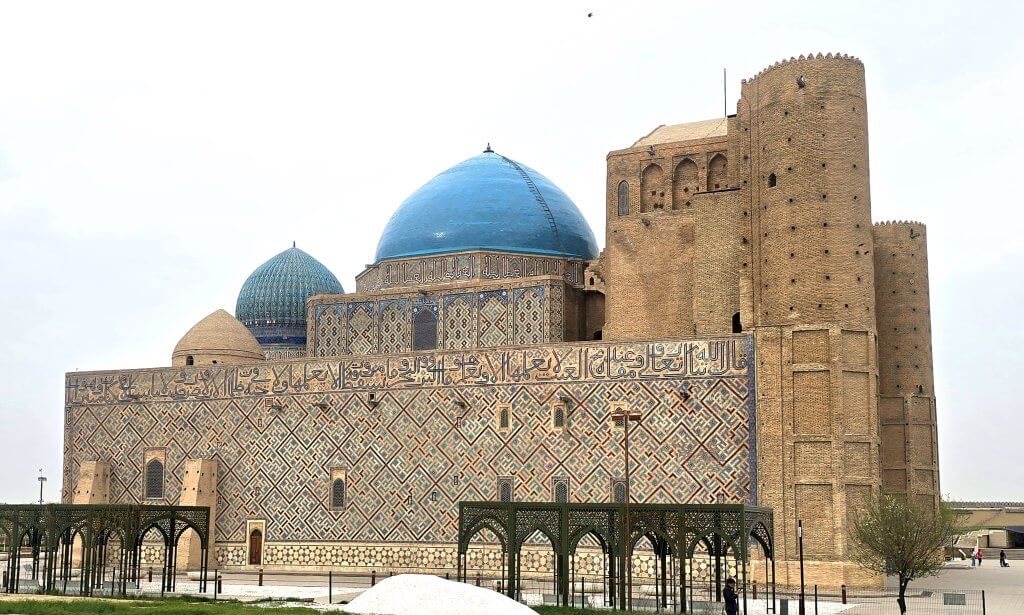
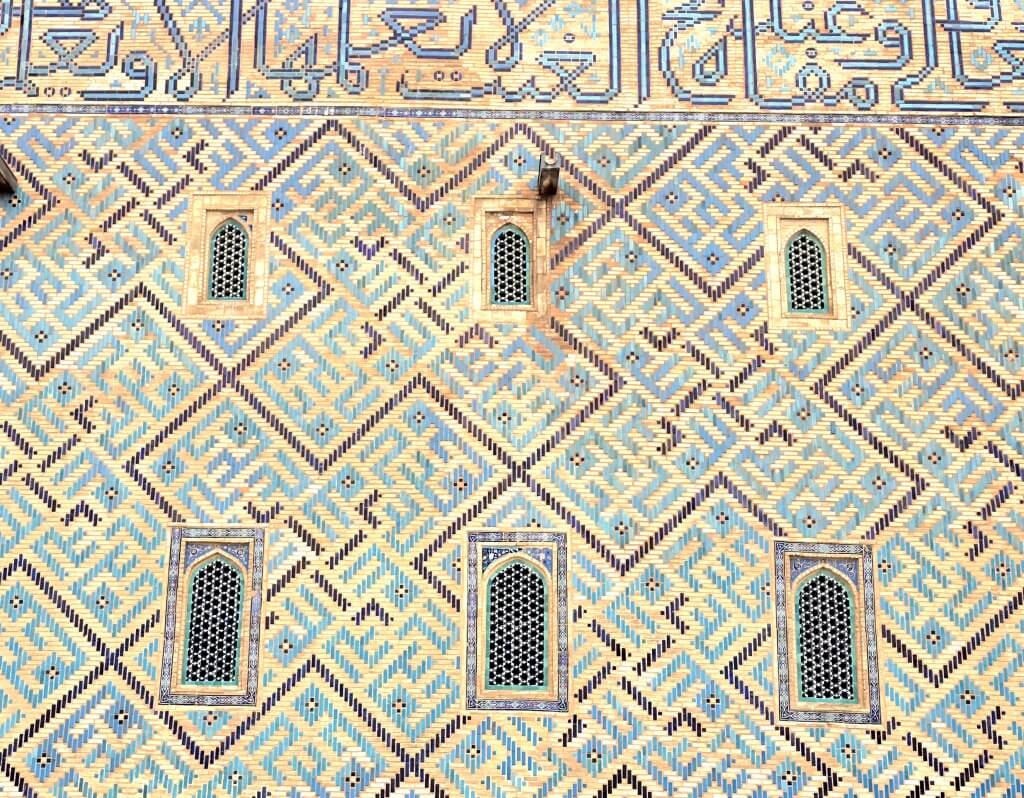
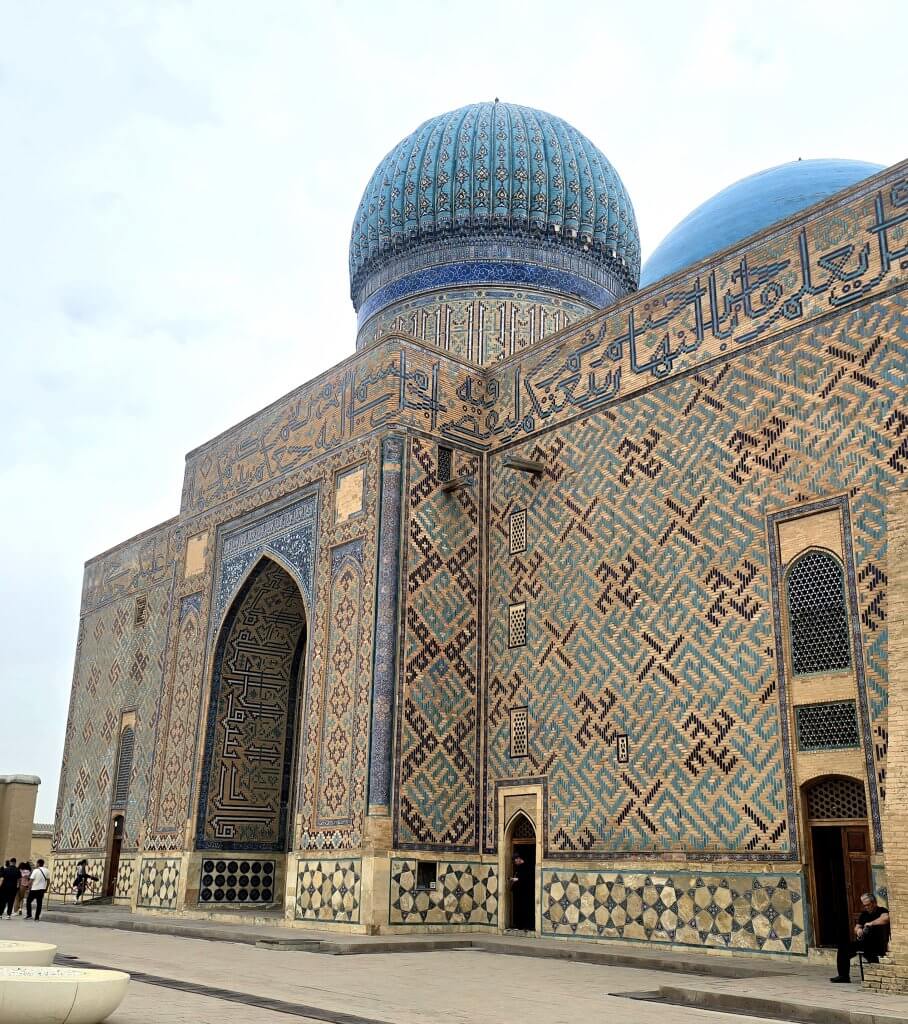
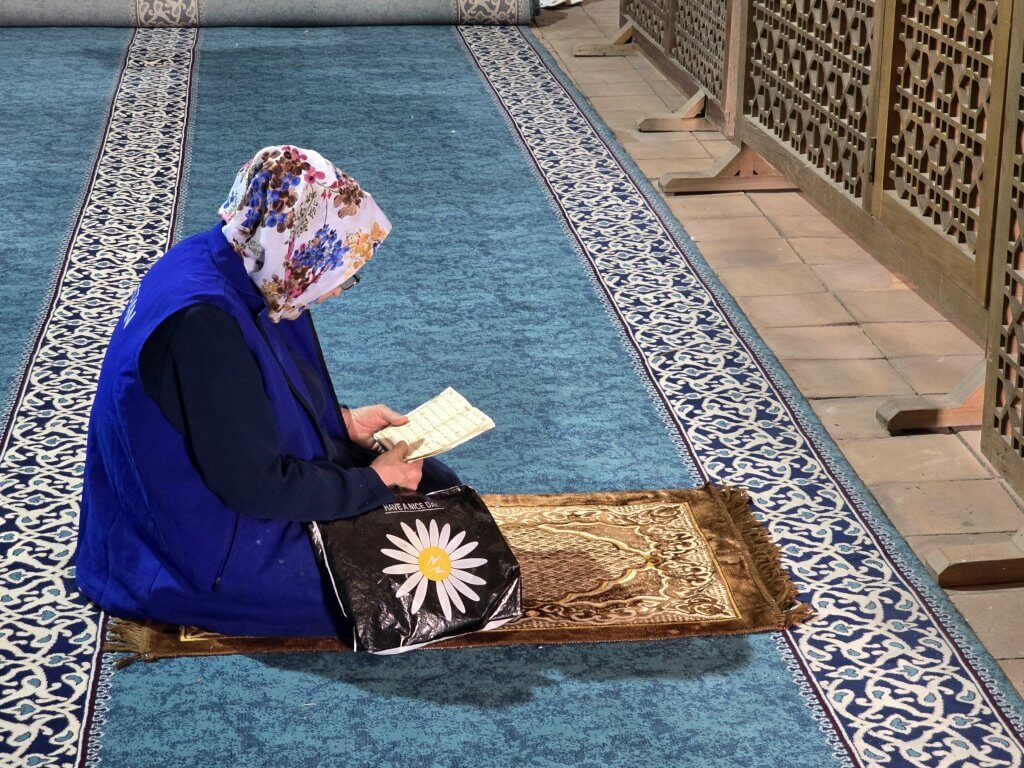
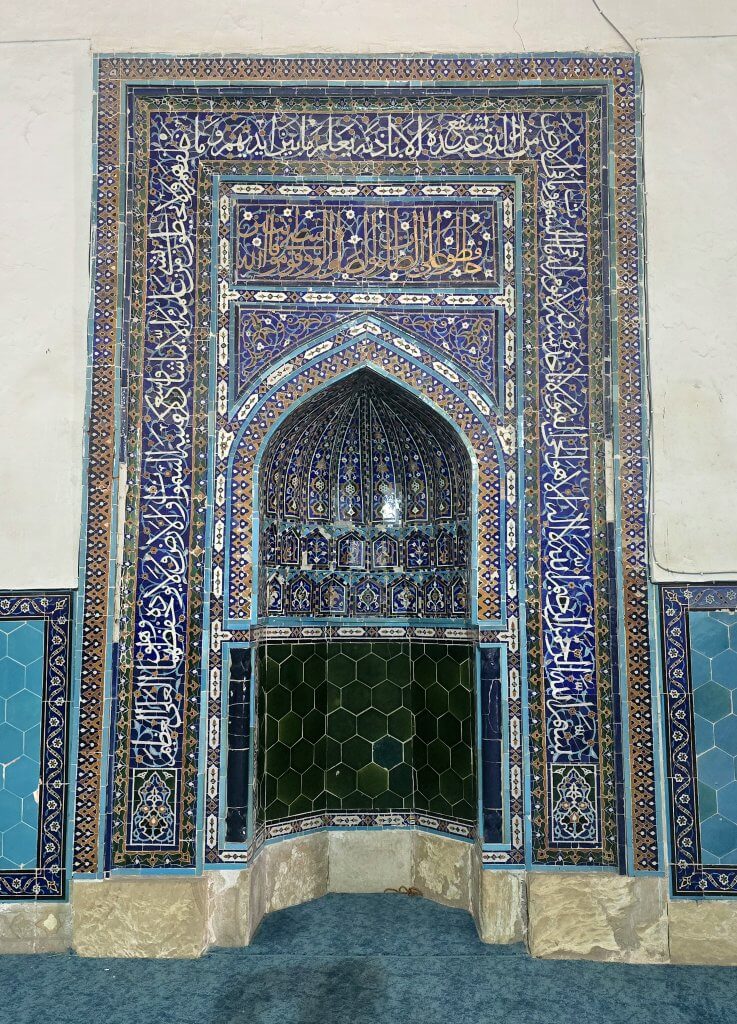
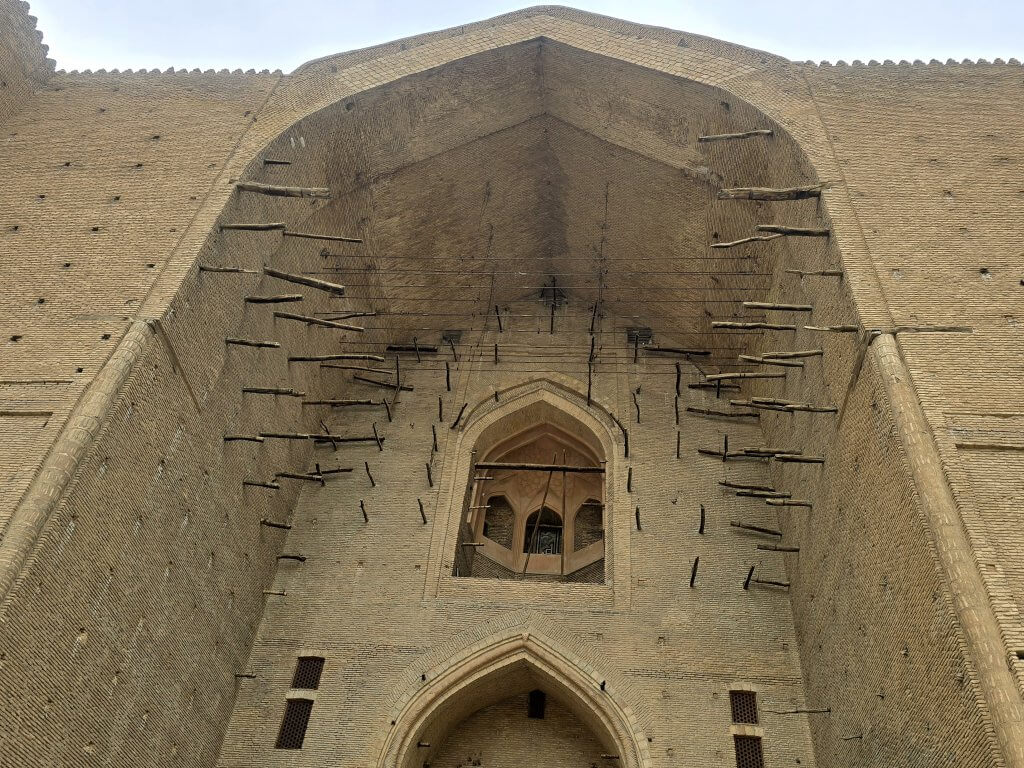
Turkistan was quite a suprise in many ways. While the Mausoleum of Khoja Ahmed Yasawi was expected, there was so much new development and striking architecture, much of it sponsored by Turkey.
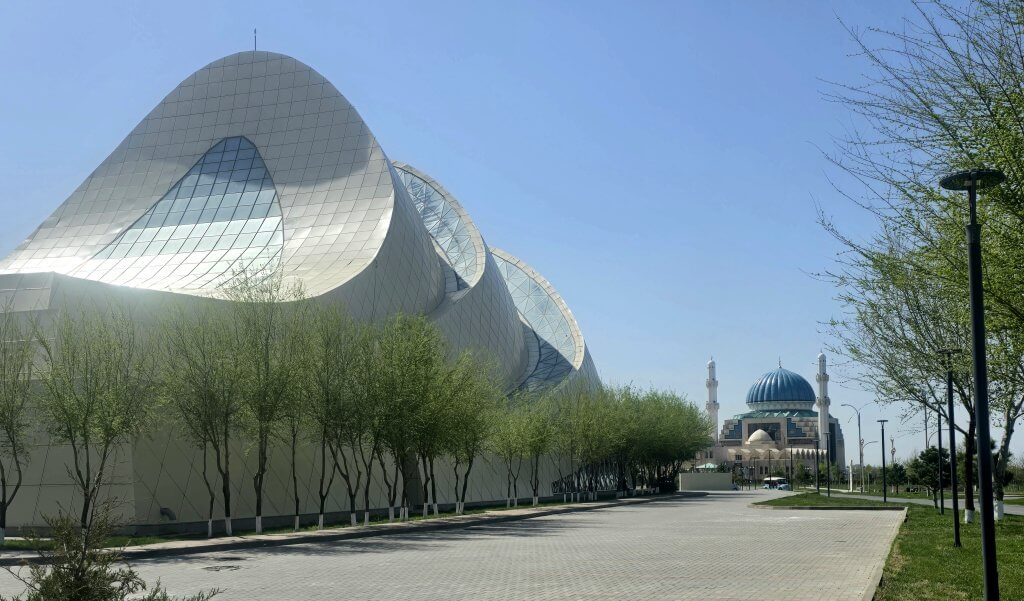
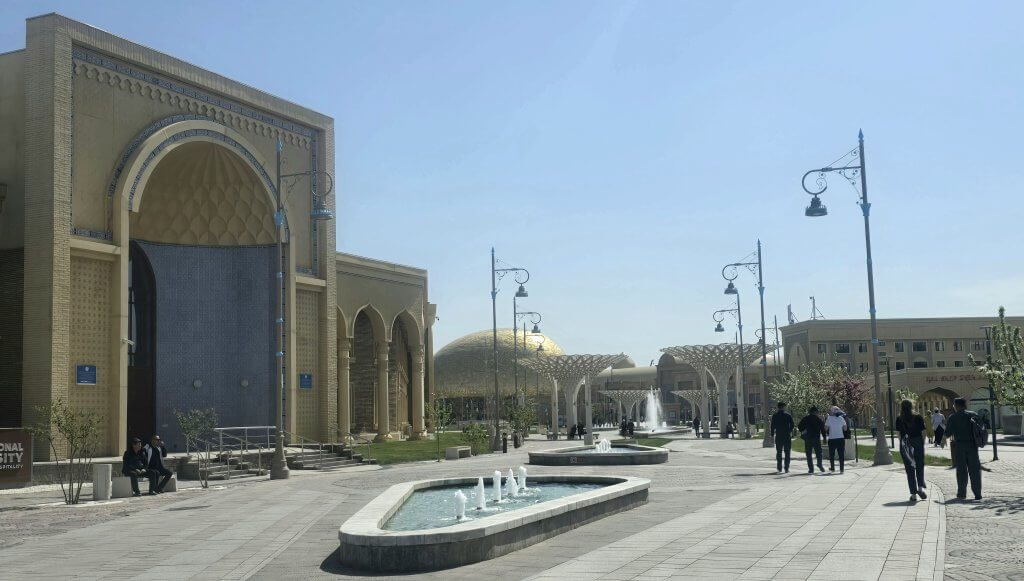
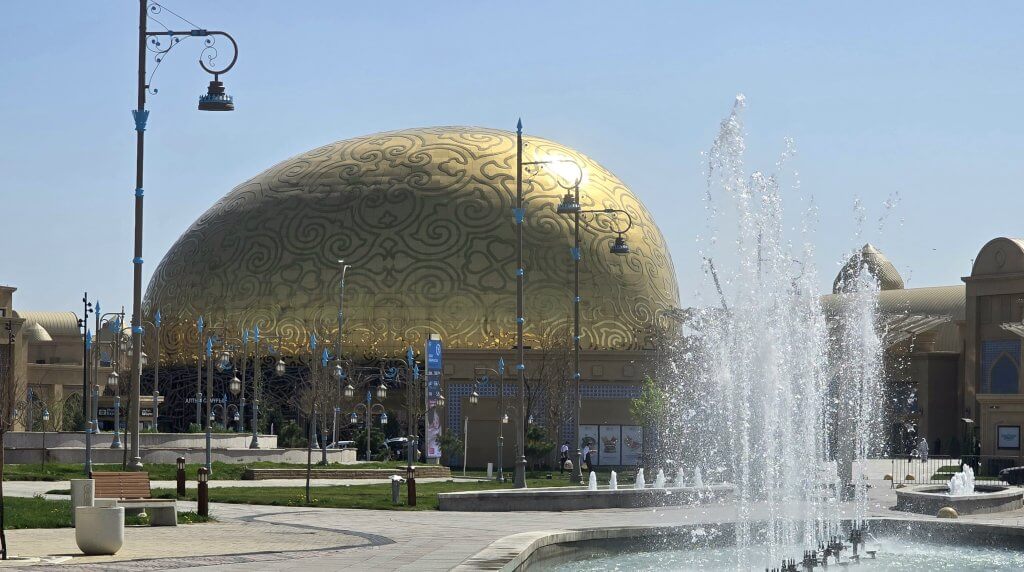
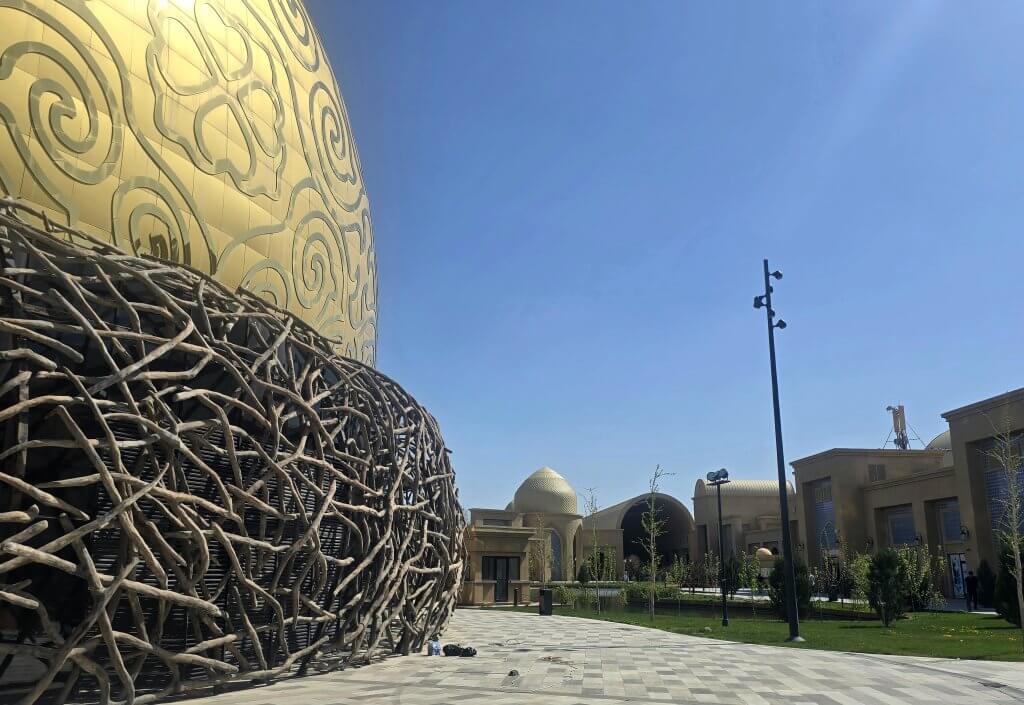
FOLLOW THE JOURNEY
Thanks to ZeroeSixZero, you can open this URL on your phone and select “add to home screen” and the map will become and app. You can then keep updated in real time.
TAKE ACTION
Support my Water.org fundraiser to help bring safe drinking water and sanitation to the world: Just $5 (USD) provides someone with safe drinking water or access to sanitation, and every $5 donated to my fundraiser will enter the donor into the Breaking the Cycle Prize Draw.
EDUCATION
An education programme in partnership with Exploring by the Seat of Your Pants, with contributions from The Royal Geographical Society and The Duke of Edinburgh’s International Award Australia. We have created a Story Map resource to anchor the programme where presentations and updates will be added as we go.




